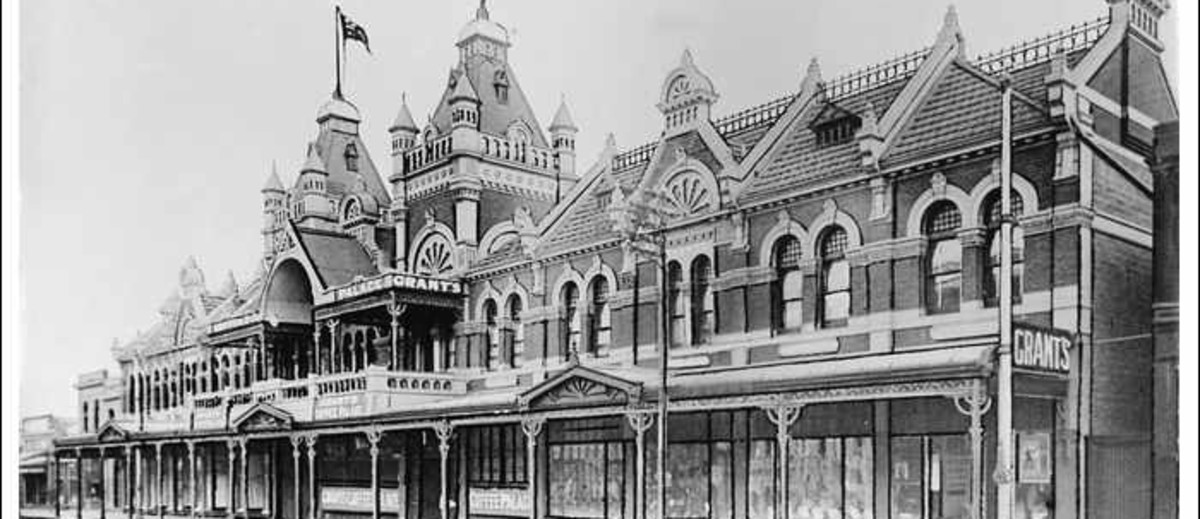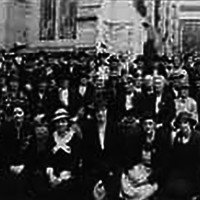Temperance activity has frequently been derided as the work of humourless wowsers and killjoys. However, the history of the temperance movement reveals this as a shallow judgement that ignores the extent to which the movement has been associated with political and social reform. This history lends some weight to the claim that the word ‘wowser’ may have originated as an acronym for the slogan ‘We Only Want Social Evils Removed’.
Temperance and social reform in nineteenth century South Australia
A Total Abstinence League was formed in South Australia in 1840 and boasted 10 000 members by 1869. By the 1880s the Independent Order of Rechabites, a friendly society that required its members to be teetotallers, was flourishing and offering health care and various forms of social insurance to South Australians whose lives would otherwise have been more precarious. By then, two other temperance organisations, which were to prove long lived and influential, had been established: the South Australian Alliance (1884) which provided political leadership to the movement, and the Woman’s Christian Temperance Union (WCTU; 1886) which linked its goal of combating alcohol-related problems with advocacy for women’s suffrage and for the protection of women and children in the home and in the workplace.
The temperance movement could rely on strong support from South Australian Methodists and other Nonconformist Christians, among whom, by the end of the century, total abstinence and an unswerving hostility to the liquor trade was the normative position. In many of their congregations, this was bolstered by the establishment of juvenile temperance organisations, called Bands of Hope, which encouraged their young members to sign a pledge of life-long abstinence from intoxicating liquors. The conferences and assemblies of these denominations regularly passed resolutions declaring their opposition to intemperance, which they identified as a major moral and social evil.
From the late nineteenth century, the temperance cause was further strengthened by the establishment of alcohol-free ‘coffee palaces’ and temperance hotels in Adelaide and elsewhere in South Australia. These provided food, comfortable accommodation and opportunities for socialising in pleasant surroundings with an ambience far removed from that of the hotel front bar. Among the most notable were the Grand Coffee Palace (1891, replacing a coffee palace destroyed by fire in 1889; rebuilt 1907; now the Plaza Hotel) and Grant’s Coffee Palace (1908; West’s Coffee Palace from 1919; now Arts SA headquarters) almost directly opposite each other in Hindley Street, Adelaide and the Grosvenor Hotel on North Terrace, Adelaide (1918).
An intemperate movement – and some big victories
Despite its name, the temperance movement was never about moderation. It stood for abstinence as the standard for individuals, and for many years its goal was the prohibition of the liquor trade. This, it argued, would be of incalculable benefit to the health, good order and progress of the community. It supported legislative means to this end, characterising achievements that fell short of its ultimate goal as ‘instalments on prohibition’. Among its early victories was the enshrining in law of the principle of ‘local option’, whereby electors could exercise control over the number of liquor licences in their district, restrictions to Sunday trading hours, the raising of the legal drinking age and, in 1916, the establishment of ‘6 o’clock closing’. This most famous South Australian temperance achievement followed prolonged agitation, culminating in a referendum in 1915. Of the 100 418 who supported early closing, out of a total of 176 537 voters, undoubtedly some were influenced by war-induced patriotism and expected a return to late closing after the war. In fact, the achievement of 6 o’clock closing galvanised support for prohibition, and helped maintain the temperance movement’s faith in the ongoing struggle to hold on to and to extend earlier gains.
Throughout the 1920s and 1930s the WCTU taught ‘scientific temperance’ in schools, temperance ideals flourished in Nonconformist churches, and the South Australian Alliance worked tirelessly through meetings, field days and its journal, the Patriot, to disseminate information and to maintain debate. The legislative focus was the achievement of 1 o’clock closing on Saturdays and the defence of 6 o’clock closing on weekdays. This was supported by widespread opinion, not all wowserish or prohibitionist, that 6 o’clock closing had been a positive reform. An attempt in the South Australian Parliament in 1938 to revoke 6 o’clock closing encouraged temperance advocates into a major public campaign, involving huge marches and rallies and carefully targeted lobbying of politicians. In a parliament in which there was an unusually large number of independent members, it was probably this lobbying which ensured that the ‘booze bill’ was defeated – by one vote. This was the last great victory of the temperance movement and marked the end of its period of greatest vigour and popular support. Even so, the achievements of 1938 remained intact until 1967 without the need for major defensive campaigns. However, by then South Australian society and the priorities of the churches and those who had supported various temperance establishments were so changed that the earlier gains were easily swept aside. Ten o’clock closing of hotel bars was widely welcomed and heralded a new era of increased social latitude.
Today – a more temperate approach
The South Australian Alliance, now called People for Alcohol Concern and Education, and the WCTU continue to carry the temperance banner, though greatly diminished in strength and less forthright in style. In the churches that were once stridently teetotal and prohibitionist, private behaviour and public stances have changed dramatically since the 1960s. Alcohol is still seen as a major social issue, but attitudes are more flexible, analysis of the determinants of the issue and prescriptions for dealing with it more nuanced, and harm minimisation rather than prohibition is widely accepted as an appropriate goal.

Thanks for sharing that Andrew, sounds like there might be a fascinating story there. We'd love to see a photo of the sash!
My great grandfather was a Past Chief Ruler of the Rechabites in SA, my late father gave me his old Sash only just now we looked up and seen what it was.
Close, Susan, ‘Social attitudes to liquor and liquor legislation in South Australia, 1876–1917’, (BA Hons thesis, University of Adelaide, 1961).
Hunt, Arnold D, This side of heaven: a history of Methodism in South Australia (Adelaide: Lutheran Publishing House, 1985).
Patriot (journal of the South Australian Alliance, prior to 1907 published as Alliance News).
Raftery, Judith, ‘God’s gift or demon drink? Churches and alcohol in South Australia between the two world wars’, Journal of the Historical Society of South Australia, 15, 1987.




Add your comment